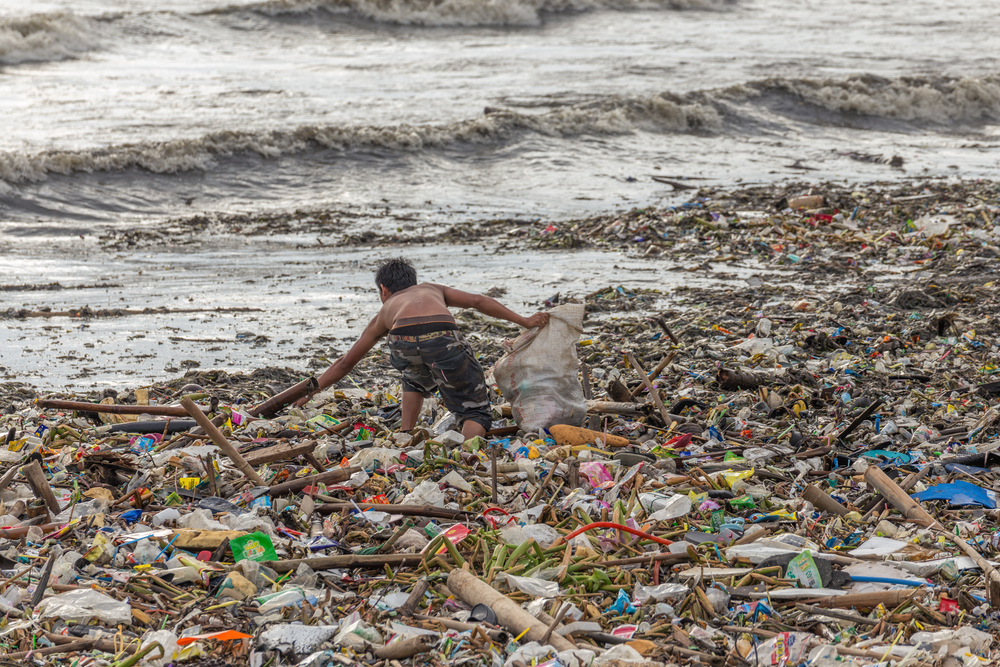Environment: Environmental Issues
The Philippines, an archipelago located in Southeast Asia, faces numerous environmental challenges. Some of the major environmental issues are:
- Deforestation: The Philippines is one of the world's most rapidly deforested countries, with most of the deforestation happening due to illegal logging, conversion to agricultural lands and urbanisation.
- Marine Pollution: The Philippines has a long coastline with abundant marine resources, but pollution from shipping, agriculture, and other human activities have severely impacted the quality of the ocean.
- Plastic Waste: Plastic waste is a growing problem in the Philippines, with an estimated 13,000 tons of plastic waste ending up in the ocean every year. This is a result of a lack of proper waste management and poor waste disposal practices.
- Climate Change: Climate change impacts the Philippines through typhoons, sea level rise, and changes in precipitation patterns, which affect agriculture, water resources, and coastal communities.
- Overfishing: Overfishing is a major issue in the Philippines, with many fish populations being severely depleted due to over-exploitation. This threatens the livelihoods of fishing communities and the biodiversity of marine ecosystems.
- Soil Erosion: Soil erosion is a major environmental problem in the Philippines, caused by deforestation, overgrazing, and other human activities. This leads to soil degradation and reduced agricultural productivity.
In conclusion, these environmental issues pose a threat to the Philippines' economy, ecosystems, and human health, and need to be addressed through effective conservation and sustainable resource management policies.
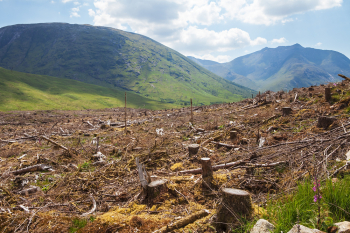
Deforestation
Deforestation has had a significant impact on the environment in the Philippines, leading to a number of consequences that affect the country's ecosystems, wildlife, and human populations. Here are six effects of deforestation specifically in the Philippines:
- Loss of Biodiversity: Deforestation in the Philippines has resulted in the loss of critical habitats for many species of plants and animals, leading to a decline in biodiversity. For example, the deforestation of the country's lowland forests has resulted in the loss of habitats for many species of primates, including the Philippine tarsier, a small nocturnal primate found only in the Philippines.
- Soil Erosion: Deforestation results in the loss of vegetation, which in turn can lead to soil erosion. For example, soil erosion has become a major problem, especially in areas where deforestation has been extensive. This can lead to a reduction in the fertility of the soil, making it difficult for crops to grow.
- Flooding: Trees help to absorb water and regulate the flow of water in a watershed. Deforestation in the Philippines has resulted in the loss of trees and other vegetation, making it easier for floods to occur during heavy rain. For example, this can have a devastating impact on local communities, as well as on infrastructure, such as roads and bridges.
- Reduced Water Quality: Deforestation can lead to reduced water quality, as the removal of trees and other vegetation results in increased runoff of pollutants and sediment into waterways. For example, this has been a major problem, especially in urban areas where runoff from deforested areas can contaminate drinking water supplies.
- Climate Change: Deforestation contributes to climate change by releasing carbon dioxide into the atmosphere, as well as by reducing the amount of vegetation available to absorb and store carbon. For example, deforestation has led to increased temperatures, changes in precipitation patterns, and more frequent and intense extreme weather events.
- Loss of Livelihoods: Deforestation can also result in the loss of livelihoods for people who depend on the forest for their livelihoods, such as hunters, fishers, and woodcutters. For example, this has been a major problem, as many people living in rural areas rely on the forest for their livelihoods.
In conclusion, deforestation has had a significant impact on the environment in the Philippines, resulting in a range of consequences that affect the country's ecosystems, wildlife, and human populations. Addressing deforestation will require a concerted effort by government, NGOs, and local communities to protect and restore the country's forests.

Marine Pollution
Marine pollution is one of the major environmental issues facing the Philippines, with numerous negative impacts on the country's marine and coastal ecosystems. Here are some of the specific effects of marine pollution in the Philippines:
- Harm to Marine Life: Marine pollution affects the health and survival of a wide range of marine species, including fish, sea turtles, dolphins, and whales. In the Philippines, a major source of marine pollution is plastic waste, which harms marine life through entanglement and ingestion. For example, in the Verde Island Passage, known as the "center of the center of marine biodiversity," marine plastic pollution has been found to cause significant harm to marine life such as sea turtles and fish.
- Loss of Biodiversity: The excessive levels of pollutants in Philippine waters can lead to the loss of biodiversity, as certain species may be unable to adapt to the changing conditions. For example, the toxic chemicals present in oil spills and other types of marine pollution can have a detrimental impact on the coral reefs, which are some of the most biodiverse ecosystems on the planet and home to a vast array of marine life.
- Reduced Fishing Industry: Marine pollution also negatively affects the fishing industry in the Philippines, which is a significant source of livelihood for many communities. Polluted waters can result in the death of fish, making it difficult for fishermen to find enough to catch and sell. For example, in some cases, entire fishing grounds have been rendered unsuitable for fishing due to the high levels of pollutants.
- Health Impacts: Marine pollution in the Philippines can also have serious health impacts on the people who live near the coast and rely on seafood as a major source of protein. Eating contaminated seafood can lead to food poisoning and other health problems. For example, this can have serious consequences for those who are already facing health problems or have weak immune systems.
- Beach Degradation: Marine pollution can also result in the degradation of beaches and other coastal areas, making them less appealing and damaging the local tourist industry. For example, there are many popular tourist destinations that are affected by marine pollution, including Boracay and El Nido, which attract millions of visitors each year.
- Damage to Coral Reefs: Coral reefs are incredibly important to the marine ecosystem in the Philippines, as they provide habitat for countless species of fish and other marine life. For example, marine pollution, such as oil spills and toxic chemicals, can have a serious impact on coral reefs, causing them to become diseased and die. This not only damages the ecosystem, but also undermines the livelihoods of those who rely on the coral reefs for fishing or tourism.
In conclusion, marine pollution is a serious issue in the Philippines, with far-reaching impacts on the environment, the economy, and the health of the people who live there. It is essential that effective measures are put in place to reduce marine pollution and protect the country's valuable marine resources.
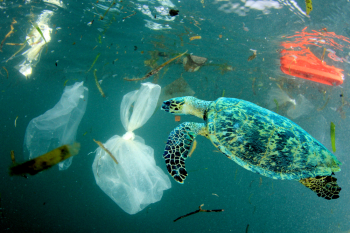
Plastic Waste
Plastic waste has become a global environmental issue, with the Philippines being one of the countries heavily affected by it. The following are some of the specific effects of plastic waste on the environment in the Philippines.
- Harm to Marine Life: Plastic waste in the ocean poses a serious threat to marine life, including whales, dolphins, and sea turtles. In the Philippines, there have been numerous instances of marine animals being found dead with plastic in their stomachs.For example, a study in the Philippines showed that nearly half of the sea turtles found dead had ingested plastic, leading to their death.
- Contamination of Soil and Water: Plastic waste can also contaminate soil and water, affecting the quality of crops and posing a risk to human health.For example, there have been reports of groundwater contamination from plastic waste leaching into the soil.
- Impact on Tourism: The accumulation of plastic waste can also impact the tourism industry, with visitors being deterred by unsightly piles of waste on beaches and in the ocean.For example, there are many popular tourist destinations such as Boracay and Palawan that are facing plastic waste issues, which can negatively impact the local economy.
- Disruption of Ecosystems: Plastic waste can also disrupt ecosystems by altering the balance of species and affecting the food chain.For example, in the Philippines, plastic waste in the ocean has been found to have a negative impact on coral reefs, which provide habitat for a variety of species.
- Health Risks to Humans: Plastic waste can also pose a risk to human health, particularly in communities that live near landfills or illegal dumping sites.For example, there have been reports of respiratory problems, skin irritation, and other health issues in communities living near plastic waste.
- Economic Costs: Finally, the accumulation of plastic waste can also have economic costs, including the costs of cleanup and the negative impact on industries such as fishing and tourism.For example, the government has estimated that the cost of plastic waste management is around $20 million annually.
In conclusion, plastic waste in the Philippines has far-reaching effects on the environment, wildlife, and human health, as well as the local economy. It is important for both the government and the public to take action to reduce the amount of plastic waste and ensure that it is properly managed to prevent these impacts from becoming worse.
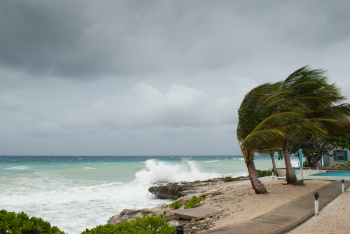
Climate Change
Climate change is a pressing issue worldwide, and the Philippines is no exception. The country is particularly vulnerable to its impacts due to its location, as well as its already existing environmental and socio-economic challenges. Here are six specific effects of climate change on the environment in the Philippines:
- Rising Sea Levels: Rising sea levels due to global warming are a significant threat to the Philippines. In the long term, it can lead to the loss of coastal areas, such as the erosion of beaches and the submergence of low-lying islands. For example, in the coastal city of Tacloban, sea level rise is causing saltwater intrusion into freshwater aquifers, affecting the supply of drinking water for the residents.
- Increased Intensity and Frequency of Natural Disasters: The Philippines is often hit by typhoons and other natural disasters, and the impacts of climate change are making these events more frequent and intense. For example, Typhoon Haiyan, which hit the country in 2013, resulted in the loss of thousands of lives and massive destruction of infrastructure and properties.
- Deterioration of Coral Reefs and Marine Ecosystems: The Philippines has some of the world's most diverse marine ecosystems, including coral reefs, and these are also vulnerable to the impacts of climate change. The bleaching of coral reefs due to rising ocean temperatures and acidification can result in the death of these important habitats and the loss of the species they support. For example, the Tubbataha Reef in the Sulu Sea is one of the country's most important coral reefs, and it is already suffering from coral bleaching due to climate change.
- Changes in Rainfall Patterns: Climate change is also affecting rainfall patterns in the Philippines, which can lead to water scarcity in some areas and to flooding in others. For example, in Metro Manila, the country's capital, changes in rainfall patterns have led to severe flooding in recent years, affecting millions of residents.
- Agricultural Impacts: The impacts of climate change on agriculture in the Philippines can be severe, including decreased crop yields, increased pest and disease outbreaks, and soil degradation. For example, the country's rice paddies are vulnerable to sea level rise, which can result in the loss of fertile land and a decline in food production.
- Human Health Impacts: Climate change can also have direct and indirect impacts on human health, such as the spread of vector-borne diseases, food and water insecurity, and increased air pollution. For example, the increased frequency of heat waves due to rising temperatures can result in heat stress and other health problems, particularly among vulnerable populations such as the elderly and the poor.
In conclusion, the effects of climate change on the environment in the Philippines are numerous and far-reaching, and they are likely to intensify in the coming years. It is therefore essential for the government and other stakeholders to take immediate and sustained action to address this pressing issue and to promote a more sustainable future for the country and its people.
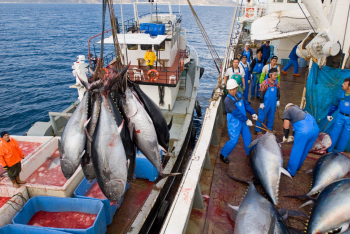
Overfishing
The Philippines is an archipelago of over 7,000 islands and is home to a rich and diverse array of marine life. Unfortunately, the country's marine environment is facing many threats, including overfishing. Overfishing is a major problem in the Philippines and has many effects on the marine environment and the people who depend on it.List of Effects:
- Decrease in Fish Populations: Overfishing in the Philippines has resulted in a decline in fish populations. This has a significant impact on the livelihoods of local fishing communities. For example, who depend on the sea for their food and income.
- Destruction of Coral Reefs: Coral reefs are critical habitats for many marine species and provide important services to people such as coastal protection and recreation. For example, overfishing in the Philippines has led to the destruction of these important habitats and the loss of marine biodiversity.
- Imbalance in Marine Ecosystems: Overfishing can lead to an imbalance in marine ecosystems, as predatory species are removed from the food chain and their prey increase in abundance. For example, this can have ripple effects throughout the ecosystem, leading to changes in species composition and the loss of biodiversity.
- Increased Carbon Emissions: The Philippine fishing industry is heavily reliant on fossil fuels, which results in increased carbon emissions that contribute to climate change. For example, overfishing only exacerbates this problem by increasing the demand for fishing vessels, fuel, and other resources.
- Economic Costs: Overfishing in the Philippines has significant economic costs, as the decline in fish populations leads to a reduction in the availability of fish for both local and global markets. For example, this has a negative impact on the economy of the country and the livelihoods of those who depend on the fishing industry.
- Food Insecurity: Overfishing in the Philippines has led to a decline in fish populations, which is a major source of protein for many people in the country. For example, this can result in food insecurity, particularly for coastal communities who depend on the sea for their food.
In conclusion, overfishing in the Philippines has many negative effects on the marine environment and the people who depend on it. It is essential that the government and local communities take action to address this issue and implement measures to ensure sustainable fishing practices. This will not only protect the marine environment and the livelihoods of fishing communities but also contribute to the overall health and well-being of the country.
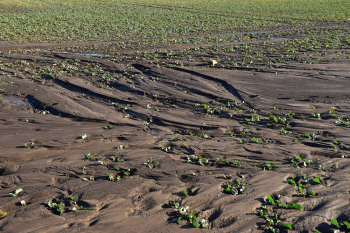
Soil Erosion
Soil erosion is a significant environmental issue facing the Philippines, as it can have far-reaching consequences for the country's ecosystem and economy. The following are six specific effects of soil erosion in the Philippines:
- Decreased Agricultural Productivity: Soil erosion can strip fertile topsoil from crops and reduce the amount of nutrients available to plants. This can lead to lower yields, less food production, and a decline in the overall health of the soil. For example, soil erosion has been a persistent issue in the Philippines' rice-growing regions, reducing the land's ability to sustain the crop and contributing to food insecurity.
- Increased Risk of Flooding and Landslides: When soil is eroded, it can leave behind less vegetation and a harder surface, making it easier for rainwater to runoff and causing increased flooding. Additionally, steep slopes can become destabilized and prone to landslides, putting lives and property at risk. For example, the typhoons that regularly hit the Philippines exacerbate these issues, causing widespread damage and loss of life.
- Water Pollution: Soil erosion can lead to increased sedimentation in rivers, lakes, and other waterways. This can reduce the quality of water available for drinking, agriculture, and other uses, and can negatively impact aquatic life. For example, the La Mesa Reservoir in Manila, a major source of drinking water for millions of residents, has been impacted by soil erosion from surrounding areas, leading to sedimentation and reduced water quality.
- Decreased Biodiversity: Soil erosion can result in the loss of habitats for plants and animals, reducing biodiversity and putting species at risk of extinction. For example, a number of species of wildlife, including monkeys and birds, have been impacted by the loss of their forest habitats due to soil erosion.
- Economic Impacts: Soil erosion can have significant economic impacts in the Philippines, reducing agricultural productivity, increasing the cost of water treatment, and leading to losses from flooding and landslides. For example, the tourism industry in some areas can be negatively impacted if soil erosion causes damage to natural attractions, such as beaches and coral reefs.
- Climate Change Impacts: Soil erosion can contribute to the emissions of greenhouse gases, such as carbon dioxide, which drive climate change. For example, the loss of vegetation and soil structure can reduce the land's ability to store carbon, exacerbating the impacts of climate change.
In conclusion, soil erosion is a major environmental issue facing the Philippines, with a range of negative impacts on the country's ecosystem and economy. Addressing soil erosion through conservation practices, such as sustainable agriculture and reforestation, is critical to mitigating these effects and promoting long-term sustainability in the Philippines.
Copyright © 1993—2025 World Trade Press. All rights reserved.

 Philippines
Philippines 